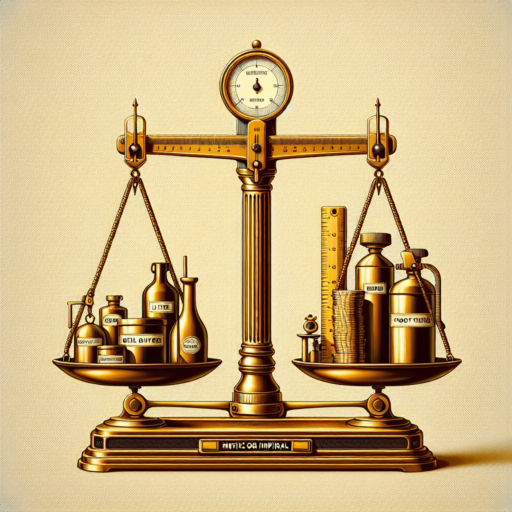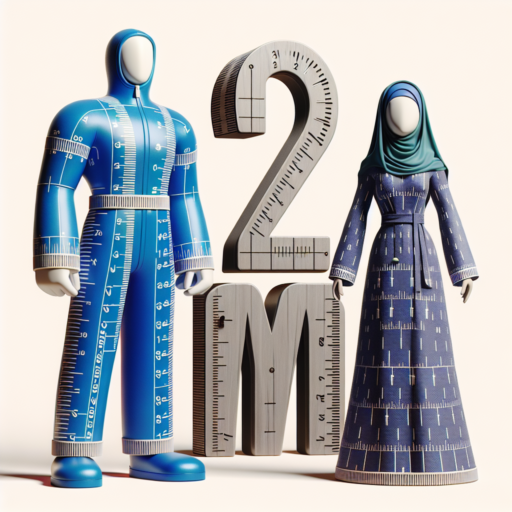Understanding Unit Setting: Metric vs Imperial Systems
The debate between the Metric and Imperial systems of measurement is long-standing, with distinct advantages and nuances in each. Understanding the differences and applications of these systems can greatly enhance accuracy and ease in various fields, including science, engineering, and daily life. The Metric system, known for its universality and easy conversion based on the number 10, stands in contrast to the Imperial system, which is primarily used in the United States.
The Metric system, officially called the International System of Units (SI), comprises units such as the meter for length, the kilogram for mass, and the liter for volume. This system simplifies calculations and promotes global standardization. On the other hand, the Imperial system, with units like inches, pounds, and gallons, has a more complex conversion methodology which can lead to errors if not carefully managed. Despite its complexity, the Imperial system remains deeply embedded in the culture and daily operations of the countries that use it.
Choosing between Metric and Imperial systems often boils down to the field of application and geographic location. For scientists and international businesses, the Metric system is preferred due to its universal acceptance and the ease of sharing and comparing data. Conversely, industries based in the United States, or those that deal with products and services specifically for this market, often utilize the Imperial system. This dichotomy highlights the importance of being proficient in both systems for professionals working in a global context.
No se han encontrado productos.
How to Convert Between Metric and Imperial Units
Converting between metric and imperial units can often seem like a daunting task, but with a few simple concepts, it becomes a straightforward process. Both these systems are used around the world for measuring length, weight, and volume, affecting everything from our daily life to scientific and engineering projects. Understanding how to effortlessly switch between these systems can enhance your day-to-day activities and professional tasks alike.
Understanding the Basics of Each System
The metric system, adopted by most countries worldwide, is a decimal-based system that includes units like meters for length, kilograms for weight, and liters for volume. On the other hand, the imperial system, which prevails in the United States, uses feet and inches for length, pounds for weight, and gallons for volume. Grasping the fundamental units of each system forms the foundation for effective conversion.
Simple Conversion Tactics
To begin converting units, start by familiarizing yourself with the most common conversion factors. For instance, knowing that 1 inch equals 2.54 centimeters can help you convert lengths between the systems. Similarly, remembering that 1 kilogram is approximately 2.2 pounds is vital for weight conversion. Utilizing these key conversion ratios simplifies the process, making it less intimidating.
Benefits of Using the Metric System Over the Imperial
The debate between the merits of the metric system over the imperial has been ongoing for years. One significant advantage is the uniformity the metric system offers. Unlike the imperial system, which employs different units for measuring length, volume, and mass, the metric system uses a universally consistent base. This uniformity simplifies learning, understanding, and applying measurements in various contexts, from education to professional environments.
Another key benefit is the ease of conversion within the metric system. Metric units scale up and down by powers of ten, making mathematical operations and conversions straightforward. For example, converting between meters and kilometers or grams and kilograms is as simple as moving the decimal point. This contrasts sharply with the imperial system, where conversion factors are often less intuitive, requiring memorization or reference tables.
Internationally, the metric system is the standard for scientific and global trade purposes. Its widespread adoption across most countries means that measurements are universally understood and applied, removing the potential for errors or misunderstandings in international projects or transactions. This global coherence not only facilitates scientific research and collaboration but also streamlines trade, contributing to a more interconnected and efficient world economy.
When to Use Imperial Units: Understanding Its Applications
Imperial units, a system of measurements that has its roots deeply entrenched in history, continues to find relevance in certain applications and geographies today. Originating in the British Isles, these units have spread far and wide, but when exactly should one opt for Imperial units over the more widely adopted metric system? Understanding their applications is key to utilizing them effectively in both professional and daily contexts.
Household and Culinary Uses
In countries such as the United States, the imperial system is still commonly used in households, especially in the context of cooking and baking. Recipes often call for ingredients measured in cups, tablespoons, and teaspoons—a convention that dates back centuries. For those engaging with traditional recipes or cooking resources from these regions, familiarity with imperial measurements is indispensable. Moreover, home renovation and interior design in the US also frequently use feet and inches for dimensions, making it essential for commercial and DIY projects alike.
Industry-Specific Applications
While the metric system is predominantly used in science and medicine for its universal standardization, certain industries retain imperial units for legacy reasons. For example, the aerospace sector in the United States often uses miles for altitude and nautical miles for distance. Similarly, in construction and manufacturing, feet, inches, and pounds may be preferred for materials and dimensions, especially within the US and UK. This legacy use is sometimes due to the massive cost and effort required to convert existing plans, materials, and tools to metric equivalents.
Understanding when to use imperial units involves recognizing the context of your work or daily life, the geographic location, and the industry norms. Though the metric system offers a universal approach to measurements, the persistence of imperial units in specific applications highlights the importance of versatility in measurement systems. Embracing this duality can enhance efficiency and ensure smoother operations across various domains.
Step-by-Step Guide to Changing Unit Settings in Common Software
Changing unit settings in common software tools can streamline your workflow and ensure accuracy in your projects. Whether you’re working in design, engineering, or data analysis, understanding how to adjust these settings is key. This guide will walk you through the process in some of the most widely used software platforms.
Firstly, it’s important to identify the type of units you need to work with. Common options include metric (meters, centimeters) and imperial (inches, feet) units. Most software allows for easy toggling between these systems. For example, in Adobe Photoshop, you can change the unit settings by navigating to Edit > Preferences > Units & Rulers and selecting your desired units from the ‘Units’ section.
Adjusting Units in Microsoft Office
In Microsoft Office applications like Word and Excel, changing unit settings is just as straightforward. Access the options through File > Options > Advanced, and scroll down to the ‘Display’ section to select your preferred units from the ‘Show measurements in units of’ drop-down menu. This simple change can make document and spreadsheet management more intuitive, especially for users collaborating across different measurement systems.
Remember, the exact navigation path might vary slightly depending on the version of the software you are using. Always refer to the latest software documentation for precise instructions. By customizing the unit settings to fit your project needs, you’ll facilitate a smoother design process and enhance overall productivity.
Global Trends: Is the World Moving Towards Metrication?
The debate over metrication and its adoption worldwide has long been a topic of global discourse. As we delve into the global trends surrounding metrication, it’s clear that there is a gradual but noticeable shift toward the metric system. This shift is not only seen in the realms of science and education but is also increasingly being adopted by countries traditionally using the imperial system for daily activities and trade.
The Rise in Metrication Across Different Sectors
One of the key factors driving this transition is the globalization of trade and commerce. Companies striving for efficiency and interoperability across borders find the metric system to be a unifying language. Notably, in sectors such as manufacturing, pharmaceuticals, and scientific research, the metric system is paramount for precision and standardization. This widespread sectoral shift points to a future where metrication might become the norm rather than the exception.
Public and Educational Policies Toward Metrication
Governments around the world have played a significant role in propelling the metrication process. Through public policies and educational reforms, children are increasingly being taught using the metric system, which paves the way for a new generation more comfortable with kilograms and kilometers than pounds and miles. This education-first approach is instrumental in slowly transitioning societies to fully embrace metrication, highlighting its importance not just in academic settings but in everyday life.
In summary, while the move towards metrication is ongoing, the pace and acceptance vary by region and sector. The continuous global push for a unified measurement system signifies a blend of historical tradition with modern efficiency. As such, examining how different countries navigate the process reveals a fascinating insight into the complexities and inevitabilities of metrication in a globalized world.
The History of Metric and Imperial Systems: A Comparative Analysis
The Metric and Imperial systems are two of the most widely used measurement systems in the world, each with its own rich history and areas of dominance. Understanding the origins and evolutions of both systems provides insight into their comparative strengths and applications. The Metric system, known for its simplicity and universality, was developed during the French Revolution as a way to standardize measurements in France. Conversely, the Imperial system, which originated in the British Isles, evolved over centuries, incorporating various methods of measurement that were used throughout the empire.
Origins of the Metric System
The inception of the Metric system in the late 18th century marked a significant shift towards a unified measurement system. Born out of the desire for a rational and universal system of measurement, the French government tasked a group of scientists with developing a system based on a decimal system. The result was a comprehensive system based on units of ten, making calculations simpler and standardization across nations easier to achieve. This revolutionary system laid the groundwork for what would become the modern metric system, used by a majority of countries around the world today.
Development of the Imperial System
In contrast, the Imperial system’s origins can be traced back to the various measurement standards used throughout the British Empire. Its units, such as the pound, foot, and gallon, were adopted from the diverse practices of the regions under British rule. Over time, these measurements were standardized across the empire, culminating in the British Weights and Measures Act of 1824, which aimed to consolidate and clarify the system. Despite its attempt at standardization, the Imperial system remained more complex and varied compared to the uniformity of the Metric system.
Comparing the Metric and Imperial systems reveals not only their technical differences but also their cultural impact and the role of historical contingency in their development. While the Metric system’s decimal-based organization promotes ease of use and international coherence, the Imperial system’s roots in the English tradition offer a glimpse into the historical processes of measurement and standardization. Both systems reflect the societies and eras that forged them, demonstrating the intertwined nature of measurement, culture, and history.
Practical Tips for Adjusting to a Different Unit System
Moving between unit systems, whether from the metric to the imperial system or vice versa, can be a daunting task. With different scales and values for measuring length, weight, temperature, and volume, the transition requires some practical strategies for swift adjustment. This challenge is especially prevalent for those involved in fields that heavily rely on precise measurements, such as science, engineering, and cooking. Here are some effective ways to ease the process.
Get Familiar with Common Conversions
Start by familiarizing yourself with the most commonly used units in your new system. For example, knowing that a mile is equivalent to approximately 1.61 kilometers or that a kilogram is about 2.2 pounds can be vastly beneficial. Use flashcards or conversion apps to help memorize these fundamental conversions. Regular exposure and practice are key, as repeatedly using these conversions will help solidify your understanding and improve your conversion speed.
Use Tools and Technology
In today’s digital age, a plethora of tools and apps are available to simplify conversion processes. From simple conversion calculators to more sophisticated apps that offer real-time conversion, these digital aides can be invaluable. Look for apps that not only convert units but also save frequently used conversions for quick reference. Additionally, leveraging features like Siri, Alexa, or Google Assistant for voice-activated conversions can further simplify the adaptation process.
Besides digital tools, keep a physical conversion chart handy in your workspace or kitchen. This chart can serve as an immediate reference until you become more accustomed to thinking in the new unit system. Whether it’s for measuring ingredients or understanding weather forecasts, having these references at your fingertips can significantly reduce the learning curve and improve your confidence in handling different units.
Impact of Unit Setting on Industries: Metric vs Imperial
The debate between the metric and imperial systems of measurement often extends far beyond personal preference, significantly impacting various industries around the globe. With the metric system being widely adopted in most countries for its ease of conversion and simplicity, industries that engage in international trade find themselves at a crossroads. The need to constantly convert measurements can lead to inefficiencies and increase the risk of errors, which in turn, can affect production timelines and cost estimations.
On the other hand, the imperial system, predominantly used in the United States, continues to influence sectors like construction, manufacturing, and aviation within its borders. The reliance on imperial measurements in these industries can create barriers to entry for international businesses and complicate collaboration on global projects. For instance, the compatibility of parts manufactured in different unit systems can result in significant discrepancies, necessitating additional quality control measures to ensure interoperability.
The technological industry, especially in fields such as software development and digital manufacturing, has seen a more pronounced shift towards the metric system for its universality and precision. This shift illustrates a broader trend of industries adapting to a more standardized unit setting to remain competitive in the international market. Furthermore, the choice of unit system has implications for education and workforce training, where a mismatch can add layers of complexity for professionals working on multi-national projects.




